My
List |
Addition Date
|
Target
|
Mission
|
Instrument
|
Size
|

|
2022-11-22 |
Orion Nebula
|
Herschel Space Observatory
Spitzer Space Telescope
Wide-field Infrared Survey Explorer (WISE)
|
Herschel Telescope
Spitzer Space Telescope
WISE Telescope
|
9036x7646x3 |
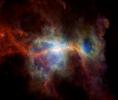
|
-
PIA25434:
-
Orion Nebula in Infrared
Full Resolution:
TIFF
(108.7 MB)
JPEG
(1.603 MB)
|

|
2022-11-11 |
Eagle Nebula
|
Wide-field Infrared Survey Explorer (WISE)
|
|
3400x3400x3 |
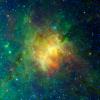
|
-
PIA25433:
-
The Eagle Nebula Observed by WISE
Full Resolution:
TIFF
(34.69 MB)
JPEG
(1.01 MB)
|

|
2020-11-18 |
|
Galaxy Evolution Explorer (GALEX)
|
|
1920x1080x3 |
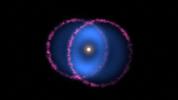
|
-
PIA23868:
-
Geometry of the Blue Ring Nebula (Animation)
Full Resolution:
TIFF
(2.374 MB)
JPEG
(66.08 kB)
|

|
2020-11-18 |
|
Galaxy Evolution Explorer (GALEX)
|
|
4791x2695x3 |
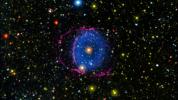
|
-
PIA23867:
-
The Blue Ring Nebula
Full Resolution:
TIFF
(26.12 MB)
JPEG
(761.9 kB)
|

|
2020-09-21 |
|
Jupiter Icy Moons Explorer (JUICE)
|
RIME
|
3024x2987x3 |

|
-
PIA24026:
-
RIME Instrument en Route to JUICE
Full Resolution:
TIFF
(19.47 MB)
JPEG
(631 kB)
|

|
2020-09-21 |
|
Jupiter Icy Moons Explorer (JUICE)
|
RIME
|
3648x2432x3 |
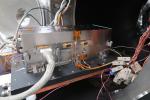
|
-
PIA24025:
-
JUICE Mission's RIME Transmitter Exits Thermal Chamber
Full Resolution:
TIFF
(20.28 MB)
JPEG
(745.9 kB)
|

|
2020-09-21 |
|
Jupiter Icy Moons Explorer (JUICE)
|
RIME
|
2736x1824x3 |
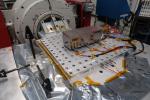
|
-
PIA24024:
-
Vibration Testing of JUICE Mission's RIME Radar Transmitter
Full Resolution:
TIFF
(13.09 MB)
JPEG
(577.7 kB)
|

|
2019-12-13 |
|
Wide-field Infrared Survey Explorer (WISE)
|
|
1622x1125x3 |
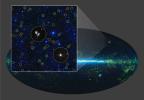
|
-
PIA23588:
-
Millions of Giant Black Holes
Full Resolution:
TIFF
(3.503 MB)
JPEG
(207.5 kB)
|

|
2018-11-15 |
|
Wide-field Infrared Survey Explorer (WISE)
|
ALMA
|
3000x3000x3 |
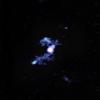
|
-
PIA22359:
-
W2246-0526 Accretion
Full Resolution:
TIFF
(3.365 MB)
JPEG
(176.9 kB)
|

|
2018-11-15 |
|
Wide-field Infrared Survey Explorer (WISE)
|
ALMA
|
11520x8640x3 |
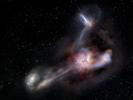
|
-
PIA22358:
-
Most Luminous Galaxy is Eating Its Neighbors (Artist's Impression)
Full Resolution:
TIFF
(127.5 MB)
JPEG
(4.134 MB)
|

|
2017-11-01 |
|
Spitzer Space Telescope
Wide-field Infrared Survey Explorer (WISE)
|
|
2048x1152x3 |

|
-
PIA22084:
-
Polluted White Dwarf (Artist's Concept)
Full Resolution:
TIFF
(3.508 MB)
JPEG
(78.36 kB)
|

|
2017-06-06 |
|
Galaxy Evolution Explorer (GALEX)
|
|
2200x1700x3 |
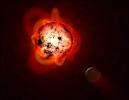
|
-
PIA21473:
-
Flaring Red Dwarf Star (Illustration)
Full Resolution:
TIFF
(4.931 MB)
JPEG
(202.8 kB)
|

|
2017-03-23 |
|
Galaxy Evolution Explorer (GALEX)
NuSTAR
|
GALEX Telescope
NuSTAR
|
2048x1152x3 |
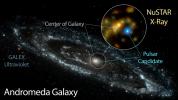
|
-
PIA20970:
-
Pulsar Candidate in Andromeda
Full Resolution:
TIFF
(3.973 MB)
JPEG
(291.9 kB)
|

|
2016-09-15 |
|
Wide-field Infrared Survey Explorer (WISE)
|
|
3482x1959x3 |
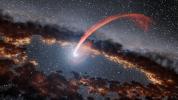
|
-
PIA20027:
-
Infrared Echoes of a Black Hole Eating a Star (Illustration)
Full Resolution:
TIFF
(19.46 MB)
JPEG
(674.8 kB)
|

|
2016-08-24 |
|
Wide-field Infrared Survey Explorer (WISE)
|
Fermi Gamma-ray Space Telescope
|
985x739x3 |
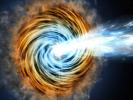
|
-
PIA20912:
-
Blazar Artist Concept
Full Resolution:
TIFF
(2.185 MB)
JPEG
(102.4 kB)
|

|
2016-07-27 |
|
Chandra X-ray Observatory
Spitzer Space Telescope
Wide-field Infrared Survey Explorer (WISE)
|
|
4534x2550x3 |
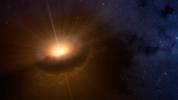
|
-
PIA20700:
-
The Loneliest Young Star (Artist's Concept)
Full Resolution:
TIFF
(22.69 MB)
JPEG
(373.6 kB)
|

|
2016-07-19 |
|
Wide-field Infrared Survey Explorer (WISE)
|
|
8000x4500x3 |
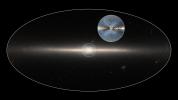
|
-
PIA20699:
-
X-Shaped Bulge in the Milky Way
Full Resolution:
TIFF
(46.74 MB)
JPEG
(6.544 MB)
|

|
2016-07-11 |
|
Galaxy Evolution Explorer (GALEX)
|
SDSS
Very Large Array (VLA)
|
3858x2170x3 |
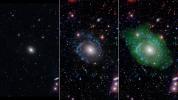
|
-
PIA20695:
-
Frankenstein Galaxy
Full Resolution:
TIFF
(18.72 MB)
JPEG
(1.023 MB)
|

|
2016-04-19 |
|
Wide-field Infrared Survey Explorer (WISE)
|
|
3840x2160x3 |
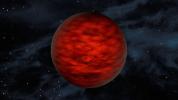
|
-
PIA20583:
-
Young Brown Dwarf in TW Hydrae Family of Stars (Artist Concept)
Full Resolution:
TIFF
(14.55 MB)
JPEG
(522.3 kB)
|

|
2016-04-19 |
|
Wide-field Infrared Survey Explorer (WISE)
|
WISE Telescope
|
3840x2160x3 |
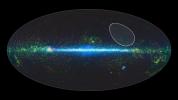
|
-
PIA20582:
-
TW Hydrae Family of Stars
Full Resolution:
TIFF
(15.21 MB)
JPEG
(882.9 kB)
|

|
2016-01-05 |
|
Spitzer Space Telescope
Wide-field Infrared Survey Explorer (WISE)
|
Spitzer Space Telescope
WISE Telescope
|
2106x706x3 |
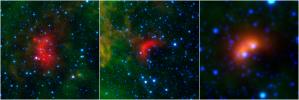
|
-
PIA20062:
-
Bow Shocks in Space
Full Resolution:
TIFF
(4.022 MB)
JPEG
(177.7 kB)
|

|
2016-01-05 |
|
Galaxy Evolution Explorer (GALEX)
NuSTAR
|
GALEX Telescope
NuSTAR
|
6289x3538x3 |
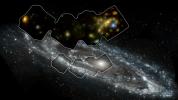
|
-
PIA20061:
-
Andromeda in High-Energy X-rays
Full Resolution:
TIFF
(41.67 MB)
JPEG
(2.214 MB)
|

|
2015-06-03 |
Milky Way
|
Wide-field Infrared Survey Explorer (WISE)
|
|
1308x1308x3 |
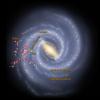
|
-
PIA19341:
-
Tracing the Arms of our Milky Way Galaxy
Full Resolution:
TIFF
(5.135 MB)
JPEG
(145.1 kB)
|

|
2015-05-21 |
|
Wide-field Infrared Survey Explorer (WISE)
|
|
4000x2250x3 |
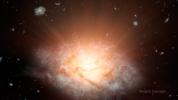
|
-
PIA19339:
-
Dusty 'Sunrise' at Core of Galaxy (Artist's Concept)
Full Resolution:
TIFF
(27.01 MB)
JPEG
(447.1 kB)
|

|
2015-03-26 |
|
Galaxy Evolution Explorer (GALEX)
|
|
1600x900x3 |
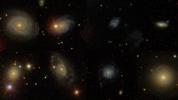
|
-
PIA18929:
-
After the Explosion: Investigating Supernova Sites
Full Resolution:
TIFF
(4.322 MB)
JPEG
(117.5 kB)
|

|
2014-10-22 |
|
Chandra X-ray Observatory
Wide-field Infrared Survey Explorer (WISE)
|
|
3600x3600x3 |
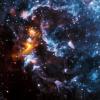
|
-
PIA18848:
-
Face Illusion in the Cosmic Clouds
Full Resolution:
TIFF
(38.89 MB)
JPEG
(573.6 kB)
|

|
2014-05-22 |
|
Wide-field Infrared Survey Explorer (WISE)
|
|
2550x5500x3 |

|
-
PIA18013:
-
Unified, or 'Doughnut,' Theory of Active, Black Holes
Full Resolution:
TIFF
(42.09 MB)
JPEG
(1.276 MB)
|

|
2014-05-22 |
|
Wide-field Infrared Survey Explorer (WISE)
|
WISE Telescope
|
3467x1949x3 |

|
-
PIA18012:
-
The Clumping Behavior of Galaxies
Full Resolution:
TIFF
(20.28 MB)
JPEG
(1.191 MB)
|

|
2014-04-25 |
|
Spitzer Space Telescope
Wide-field Infrared Survey Explorer (WISE)
|
|
1200x900x3 |
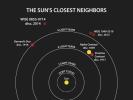
|
-
PIA18003:
-
Welcome to the Sun's Neighborhood
Full Resolution:
TIFF
(3.241 MB)
JPEG
(67.8 kB)
|

|
2014-04-25 |
|
Spitzer Space Telescope
Wide-field Infrared Survey Explorer (WISE)
|
|
810x798x3 |
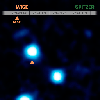
|
-
PIA18002:
-
Cold and Quick: a Fast-Moving Brown Dwarf

Full Resolution:
TIFF
(1.94 MB)
JPEG
(28.72 kB)
|

|
2014-04-25 |
|
Wide-field Infrared Survey Explorer (WISE)
|
|
3000x1688x3 |
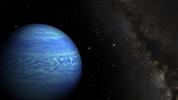
|
-
PIA18001:
-
Cold and Close Celestial Orb (Artist's Concept)
Full Resolution:
TIFF
(15.2 MB)
JPEG
(215.4 kB)
|

|
2014-03-07 |
|
Wide-field Infrared Survey Explorer (WISE)
|
Gemini Observatory
WISE Telescope
|
2233x2236x3 |
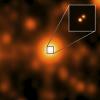
|
-
PIA17992:
-
Brown Dwarfs in our 'Backyard'
Full Resolution:
TIFF
(14.99 MB)
JPEG
(190.2 kB)
|

|
2014-03-07 |
|
Wide-field Infrared Survey Explorer (WISE)
|
|
1200x1202x3 |
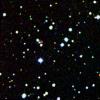
|
-
PIA17991:
-
A New Solar Neighbor
Full Resolution:
TIFF
(4.329 MB)
JPEG
(136 kB)
|

|
2014-03-07 |
|
Wide-field Infrared Survey Explorer (WISE)
|
|
8421x5361x3 |
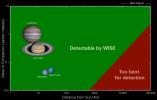
|
-
PIA17990:
-
What WISE Can and Cannot See
Full Resolution:
TIFF
(135.5 MB)
JPEG
(1.276 MB)
|

|
2014-01-29 |
|
Wide-field Infrared Survey Explorer (WISE)
|
WISE Telescope
|
4095x4095x3 |
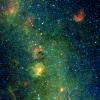
|
-
PIA17834:
-
Storm of Stars in the Trifid Nebula
Full Resolution:
TIFF
(50.32 MB)
JPEG
(2.289 MB)
|

|
2013-12-12 |
|
Wide-field Infrared Survey Explorer (WISE)
|
WISE Telescope
|
9334x7107x3 |
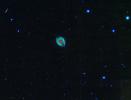
|
-
PIA17564:
-
March of Asteroids Across Dying Star
Full Resolution:
TIFF
(199.1 MB)
JPEG
(8.773 MB)
|

|
2013-12-03 |
|
Wide-field Infrared Survey Explorer (WISE)
|
|
1280x720x3 |
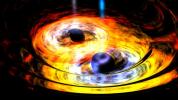
|
-
PIA17562:
-
Two Black Holes on Way to Becoming One (Artist's Concept)
Full Resolution:
TIFF
(2.766 MB)
JPEG
(108.1 kB)
|

|
2013-11-14 |
|
Wide-field Infrared Survey Explorer (WISE)
|
WISE Telescope
|
2400x1700x3 |
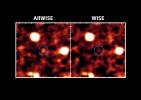
|
-
PIA17557:
-
AllWISE Brings Galaxies Out of Hiding
Full Resolution:
TIFF
(12.24 MB)
JPEG
(206.5 kB)
|

|
2013-11-14 |
|
Spitzer Space Telescope
Wide-field Infrared Survey Explorer (WISE)
|
Very Large Array (VLA)
|
2030x1200x3 |
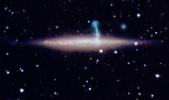
|
-
PIA17556:
-
Two Galaxies Masquerading as One
Full Resolution:
TIFF
(7.311 MB)
JPEG
(99.06 kB)
|

|
2013-10-31 |
|
Galaxy Evolution Explorer (GALEX)
Wide-field Infrared Survey Explorer (WISE)
|
GALEX Telescope
WISE Telescope
|
1302x818x3 |
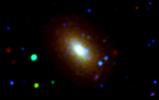
|
-
PIA17554:
-
Galaxies Grow from Inside Out
Full Resolution:
TIFF
(3.196 MB)
JPEG
(33.78 kB)
|

|
2013-10-30 |
|
Wide-field Infrared Survey Explorer (WISE)
|
WISE Telescope
|
9163x9163x3 |
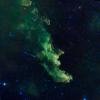
|
-
PIA17553:
-
'Witch Head' Brews Baby Stars
Full Resolution:
TIFF
(252 MB)
JPEG
(7.886 MB)
|

|
2013-08-21 |
|
Wide-field Infrared Survey Explorer (WISE)
|
|
5334x3000x3 |
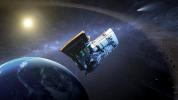
|
-
PIA17254:
-
NEOWISE: Back to Hunt More Asteroids (Artist Concept)
Full Resolution:
TIFF
(48.03 MB)
JPEG
(1.66 MB)
|

|
2013-08-21 |
Asteroid
|
Wide-field Infrared Survey Explorer (WISE)
|
WISE Telescope
|
1600x1600x3 |
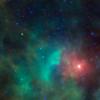
|
-
PIA17255:
-
Asteroid Zips By Orion
Full Resolution:
TIFF
(7.683 MB)
JPEG
(163.5 kB)
|

|
2013-08-01 |
|
Spitzer Space Telescope
Wide-field Infrared Survey Explorer (WISE)
|
IRAC
|
2400x1200x3 |
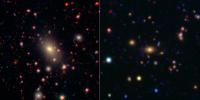
|
-
PIA17253:
-
Monster in the Middle: Brightest Cluster Galaxy
Full Resolution:
TIFF
(8.643 MB)
JPEG
(226 kB)
|

|
2013-06-28 |
|
Galaxy Evolution Explorer (GALEX)
|
GALEX Telescope
|
1650x1650x3 |
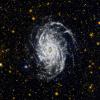
|
-
PIA17247:
-
Big Brother to the Milky Way
Full Resolution:
TIFF
(8.171 MB)
JPEG
(473.8 kB)
|

|
2013-06-28 |
|
Galaxy Evolution Explorer (GALEX)
|
GALEX Telescope
|
1500x1500x3 |
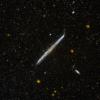
|
-
PIA17246:
-
Galaxy's Pencil-Thin Profile
Full Resolution:
TIFF
(6.753 MB)
JPEG
(377.7 kB)
|

|
2013-06-28 |
|
Galaxy Evolution Explorer (GALEX)
|
GALEX Telescope
|
1500x1500x3 |
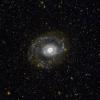
|
-
PIA17245:
-
Ultraviolet Ring of Stars
Full Resolution:
TIFF
(6.753 MB)
JPEG
(390.5 kB)
|

|
2013-06-05 |
|
Spitzer Space Telescope
Wide-field Infrared Survey Explorer (WISE)
|
IRAC
WISE Telescope
|
9000x7000x3 |
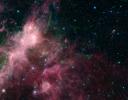
|
-
PIA17019:
-
Life and Death Intermingled
Full Resolution:
TIFF
(189.1 MB)
JPEG
(10.27 MB)
|

|
2013-06-05 |
|
Spitzer Space Telescope
Wide-field Infrared Survey Explorer (WISE)
|
IRAC
WISE Telescope
|
3000x3000x3 |
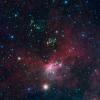
|
-
PIA17018:
-
Stars Shoot Jets in Cosmic Playground
Full Resolution:
TIFF
(27.01 MB)
JPEG
(1.76 MB)
|

|
2013-05-29 |
|
Wide-field Infrared Survey Explorer (WISE)
|
WISE Telescope
|
4534x2550x3 |
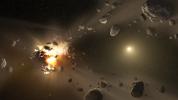
|
-
PIA17016:
-
Asteroid Family's Shattered Past (Artist Concept)
Full Resolution:
TIFF
(34.71 MB)
JPEG
(696.8 kB)
|

|
2013-04-23 |
|
Hubble Space Telescope
Wide-field Infrared Survey Explorer (WISE)
|
WISE Telescope
|
4095x2842x3 |
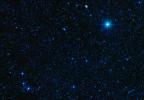
|
-
PIA17005:
-
Galaxy Packs Big Star-Making Punch
Full Resolution:
TIFF
(34.93 MB)
JPEG
(1.316 MB)
|

|
2013-03-11 |
|
Wide-field Infrared Survey Explorer (WISE)
|
WISE Telescope
|
2233x2236x3 |

|
-
PIA16872:
-
Two Brown Dwarfs in Our Backyard
Full Resolution:
TIFF
(14.99 MB)
JPEG
(190.2 kB)
|

|
2013-02-05 |
Orion
|
Wide-field Infrared Survey Explorer (WISE)
|
WISE Telescope
|
5401x5400x3 |

|
-
PIA16684:
-
The Cosmic Hearth
Full Resolution:
TIFF
(87.54 MB)
JPEG
(1.346 MB)
|

|
2013-01-10 |
|
Galaxy Evolution Explorer (GALEX)
|
|
2500x1380x3 |
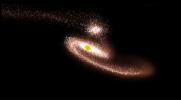
|
-
PIA16614:
-
Simulation of Galactic Collision (Simulation)
Full Resolution:
TIFF
(10.35 MB)
JPEG
(161.1 kB)
|

|
2013-01-10 |
|
ESO Very Large Telescope
Galaxy Evolution Explorer (GALEX)
Spitzer Space Telescope
|
|
5000x2812x3 |
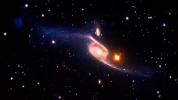
|
-
PIA16613:
-
Dwarf Galaxy Spotted
Full Resolution:
TIFF
(42.2 MB)
JPEG
(752.2 kB)
|

|
2012-12-06 |
|
Wide-field Infrared Survey Explorer (WISE)
|
|
3000x2000x3 |
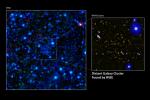
|
-
PIA16601:
-
WISE Finds a Galactic Metropolis
Full Resolution:
TIFF
(18.01 MB)
JPEG
(444.8 kB)
|

|
2012-10-15 |
|
Wide-field Infrared Survey Explorer (WISE)
|
WISE Telescope
|
3000x2400x3 |
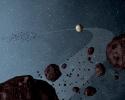
|
-
PIA16211:
-
Trojan Colors Revealed (Artist's Concept)
Full Resolution:
TIFF
(21.61 MB)
JPEG
(818.6 kB)
|

|
2012-10-03 |
|
Galaxy Evolution Explorer (GALEX)
Spitzer Space Telescope
|
IRAC
Ultraviolet/Visible Camera
|
6019x6019x3 |
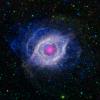
|
-
PIA15817:
-
The Helix Nebula: Unraveling at the Seams
Full Resolution:
TIFF
(108.7 MB)
JPEG
(3.087 MB)
|

|
2012-08-29 |
|
Wide-field Infrared Survey Explorer (WISE)
|
WISE Telescope
|
2400x1740x3 |
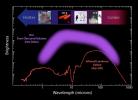
|
-
PIA15815:
-
Analyzing Hot DOG Galaxies
Full Resolution:
TIFF
(12.53 MB)
JPEG
(227.7 kB)
|

|
2012-08-29 |
|
Wide-field Infrared Survey Explorer (WISE)
|
WISE Telescope
|
3000x2400x3 |
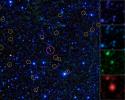
|
-
PIA15814:
-
Homing in on 'Hot Dogs'
Full Resolution:
TIFF
(21.61 MB)
JPEG
(758.8 kB)
|

|
2012-08-29 |
|
Wide-field Infrared Survey Explorer (WISE)
|
WISE Telescope
|
6500x4500x3 |
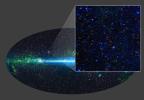
|
-
PIA15813:
-
Extremely Bright and Extremely Rare
Full Resolution:
TIFF
(87.79 MB)
JPEG
(3.944 MB)
|

|
2012-08-29 |
|
Wide-field Infrared Survey Explorer (WISE)
|
WISE Telescope
|
6500x3500x3 |
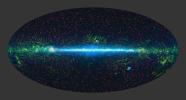
|
-
PIA15812:
-
Galaxies Burn Bright Like High-Wattage 'Light Bulbs'
Full Resolution:
TIFF
(68.28 MB)
JPEG
(3.974 MB)
|

|
2012-08-29 |
|
Wide-field Infrared Survey Explorer (WISE)
|
WISE Telescope
|
2100x2100x3 |
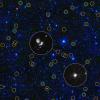
|
-
PIA15811:
-
Exposing Black Holes Disguised in Dust
Full Resolution:
TIFF
(13.24 MB)
JPEG
(734.6 kB)
|

|
2012-08-29 |
|
Wide-field Infrared Survey Explorer (WISE)
|
WISE Telescope
|
6500x4500x3 |

|
-
PIA15810:
-
A Sky Chock-Full of Black Holes
Full Resolution:
TIFF
(87.79 MB)
JPEG
(3.938 MB)
|

|
2012-08-29 |
|
Wide-field Infrared Survey Explorer (WISE)
|
WISE Telescope
|
6500x3500x3 |
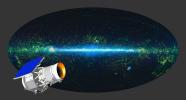
|
-
PIA15809:
-
A WISE 'Eye' on the Whole Sky (Aartist's Concept)
Full Resolution:
TIFF
(68.28 MB)
JPEG
(3.835 MB)
|

|
2012-07-02 |
|
Wide-field Infrared Survey Explorer (WISE)
|
WISE Telescope
|
5525x5535x3 |
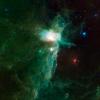
|
-
PIA15635:
-
A Different View of the Flame Nebula
Full Resolution:
TIFF
(91.79 MB)
JPEG
(1.767 MB)
|

|
2012-06-08 |
|
Wide-field Infrared Survey Explorer (WISE)
|
WISE Telescope
|
4000x2400x3 |

|
-
PIA15637:
-
Highlighting our Tiniest Neighbors

Full Resolution:
TIFF
(28.8 MB)
JPEG
(331.3 kB)
|

|
2012-05-16 |
Helix Nebula
|
Galaxy Evolution Explorer (GALEX)
|
Ultraviolet/Visible Camera
|
2920x2920x3 |

|
-
PIA15658:
-
NGC 7293, the Helix Nebula
Full Resolution:
TIFF
(25.58 MB)
JPEG
(884.6 kB)
|

|
2012-05-16 |
|
Wide-field Infrared Survey Explorer (WISE)
|
WISE Telescope
|
2016x2016x3 |
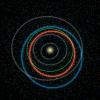
|
-
PIA15628:
-
The Hustle and Bustle of our Solar System
Full Resolution:
TIFF
(12.21 MB)
JPEG
(508.5 kB)
|

|
2012-05-16 |
|
Wide-field Infrared Survey Explorer (WISE)
|
WISE Telescope
|
4500x3375x3 |
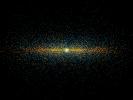
|
-
PIA15627:
-
Edge-on View of Near-Earth Asteroids
Full Resolution:
TIFF
(45.56 MB)
JPEG
(1.088 MB)
|

|
2012-05-16 |
CW Leo
|
Galaxy Evolution Explorer (GALEX)
|
Ultraviolet/Visible Camera
|
8000x5000x3 |
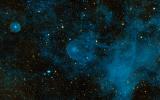
|
-
PIA15417:
-
CW Leo
Full Resolution:
TIFF
(120 MB)
JPEG
(8.366 MB)
|

|
2012-05-16 |
M31
|
Galaxy Evolution Explorer (GALEX)
|
Ultraviolet/Visible Camera
|
9400x7000x3 |
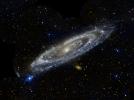
|
-
PIA15416:
-
Andromeda
Full Resolution:
TIFF
(197.4 MB)
JPEG
(6.751 MB)
|

|
2012-05-02 |
|
Galaxy Evolution Explorer (GALEX)
|
|
900x950x3 |

|
-
PIA15620:
-
Black Hole Swallows a Star
Full Resolution:
TIFF
(2.568 MB)
JPEG
(109.1 kB)
|

|
2012-05-02 |
|
Galaxy Evolution Explorer (GALEX)
|
|
1000x624x3 |
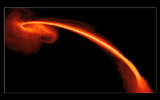
|
-
PIA15429:
-
Black Hole Erupts

Full Resolution:
TIFF
(1.875 MB)
JPEG
(30.63 kB)
|

|
2012-04-26 |
|
Wide-field Infrared Survey Explorer (WISE)
|
IRAS
|
2240x2240x3 |
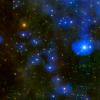
|
-
PIA15428:
-
Dusty Star Stands Out From the Rest
Full Resolution:
TIFF
(15.07 MB)
JPEG
(265 kB)
|

|
2012-04-12 |
|
Wide-field Infrared Survey Explorer (WISE)
|
WISE Telescope
|
3150x3150x3 |
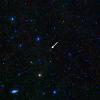
|
-
PIA15424:
-
Lone Blazar
Full Resolution:
TIFF
(29.77 MB)
JPEG
(981.1 kB)
|

|
2012-04-12 |
|
Wide-field Infrared Survey Explorer (WISE)
|
|
4500x3000x3 |
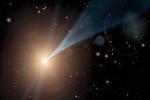
|
-
PIA15414:
-
Cosmic Jets Coming at You (Artist's Concept)
Full Resolution:
TIFF
(40.5 MB)
JPEG
(1.049 MB)
|

|
2012-04-03 |
|
Galaxy Evolution Explorer (GALEX)
Spitzer Space Telescope
|
IRAC
Ultraviolet/Visible Camera
|
1130x1130x3 |
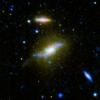
|
-
PIA15419:
-
The Beginning of the End of Star Formation
Full Resolution:
TIFF
(3.835 MB)
JPEG
(129 kB)
|

|
2012-03-22 |
|
Galaxy Evolution Explorer (GALEX)
|
Ultraviolet/Visible Camera
|
6000x6000x3 |
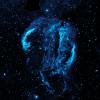
|
-
PIA15415:
-
Cygnus Loop Nebula
Full Resolution:
TIFF
(108 MB)
JPEG
(5.259 MB)
|

|
2012-03-14 |
|
Wide-field Infrared Survey Explorer (WISE)
|
WISE Telescope
|
10000x5000x3 |
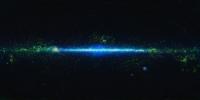
|
-
PIA15482:
-
Mapping the Infrared Universe: The Entire WISE Sky -- Rectangular Format
Full Resolution:
TIFF
(150 MB)
JPEG
(7.365 MB)
|

|
2012-03-14 |
|
Wide-field Infrared Survey Explorer (WISE)
|
WISE Telescope
|
10000x5030x3 |
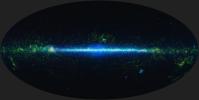
|
-
PIA15481:
-
Mapping the Infrared Universe: The Entire WISE Sky
Full Resolution:
TIFF
(150.9 MB)
JPEG
(6.828 MB)
|

|
2012-03-14 |
|
Wide-field Infrared Survey Explorer (WISE)
|
WISE Telescope
|
5400x4500x3 |
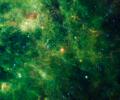
|
-
PIA15480:
-
Echoes of a Stellar Ending
Full Resolution:
TIFF
(72.9 MB)
JPEG
(2.817 MB)
|

|
2012-01-10 |
|
Wide-field Infrared Survey Explorer (WISE)
|
WISE Telescope
|
13530x4909x3 |
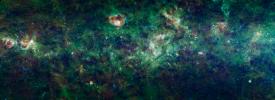
|
-
PIA15256:
-
A Royal Celebration
Full Resolution:
TIFF
(199.3 MB)
JPEG
(16.67 MB)
|

|
2011-12-22 |
|
Wide-field Infrared Survey Explorer (WISE)
|
WISE Telescope
|
4260x4800x3 |

|
-
PIA15252:
-
A Cosmic Wreath
Full Resolution:
TIFF
(61.34 MB)
JPEG
(892.8 kB)
|

|
2011-12-10 |
|
Wide-field Infrared Survey Explorer (WISE)
|
WISE Telescope
|
4750x5900x3 |

|
-
PIA14884:
-
Ancient Supernova Revealed
Full Resolution:
TIFF
(84.08 MB)
JPEG
(2.397 MB)
|

|
2011-11-25 |
|
Wide-field Infrared Survey Explorer (WISE)
|
WISE Telescope
|
11300x10500x3 |
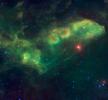
|
-
PIA14881:
-
Jabbah and Associates
Full Resolution:
TIFF
(356 MB)
JPEG
(5.949 MB)
|

|
2011-11-09 |
|
Wide-field Infrared Survey Explorer (WISE)
|
WISE Telescope
|
5200x5200x3 |
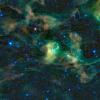
|
-
PIA14874:
-
Dusty Reflections in the Scorpion's Claws
Full Resolution:
TIFF
(81.12 MB)
JPEG
(2.361 MB)
|

|
2011-10-26 |
|
Wide-field Infrared Survey Explorer (WISE)
|
WISE Telescope
|
3300x3300x3 |
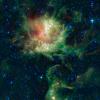
|
-
PIA14873:
-
Does 'Pacman' Have Teeth?
Full Resolution:
TIFF
(32.67 MB)
JPEG
(778.2 kB)
|

|
2011-10-24 |
|
Chandra X-ray Observatory
Spitzer Space Telescope
Wide-field Infrared Survey Explorer (WISE)
|
Chandra X-ray Telescope
IRAC
WISE Telescope
XMM-Newton X-ray
|
2811x2154x3 |
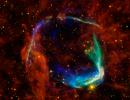
|
-
PIA14872:
-
All Eyes on Oldest Recorded Supernova
Full Resolution:
TIFF
(18.16 MB)
JPEG
(361.1 kB)
|

|
2011-10-24 |
|
Spitzer Space Telescope
Wide-field Infrared Survey Explorer (WISE)
|
IRAC
WISE Telescope
|
2811x2154x3 |
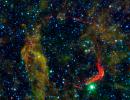
|
-
PIA14871:
-
All That Remains of Exploded Star
Full Resolution:
TIFF
(18.16 MB)
JPEG
(660.9 kB)
|

|
2011-09-29 |
Vesta
|
Wide-field Infrared Survey Explorer (WISE)
|
WISE Telescope
|
1279x716x1 |
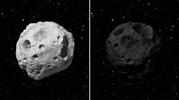
|
-
PIA14736:
-
Portrait of Two Asteroids in Different Light

Full Resolution:
TIFF
(917 kB)
JPEG
(78.71 kB)
|

|
2011-09-29 |
Vesta
|
Wide-field Infrared Survey Explorer (WISE)
|
WISE Telescope
|
1281x720x3 |
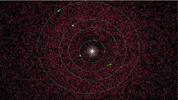
|
-
PIA14735:
-
Changing Views of Our Solar System

Full Resolution:
TIFF
(2.77 MB)
JPEG
(233.1 kB)
|

|
2011-09-29 |
Vesta
|
Wide-field Infrared Survey Explorer (WISE)
|
WISE Telescope
|
3300x2550x3 |
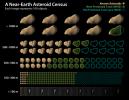
|
-
PIA14734:
-
WISE Revises Numbers of Asteroids Near Earth
Full Resolution:
TIFF
(25.25 MB)
JPEG
(848.6 kB)
|

|
2011-09-29 |
Vesta
|
Wide-field Infrared Survey Explorer (WISE)
|
WISE Telescope
|
3450x2400x3 |
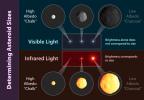
|
-
PIA14733:
-
How to Tell the Size of An Asteroid
Full Resolution:
TIFF
(24.84 MB)
JPEG
(463.2 kB)
|

|
2011-09-29 |
Vesta
|
Wide-field Infrared Survey Explorer (WISE)
|
WISE Telescope
|
3450x2400x3 |
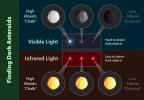
|
-
PIA14732:
-
Infrared Telescopes Spy Small, Dark Asteroids
Full Resolution:
TIFF
(24.84 MB)
JPEG
(457.8 kB)
|

|
2011-09-20 |
|
Wide-field Infrared Survey Explorer (WISE)
|
|
4888x3300x3 |
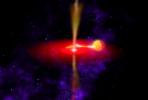
|
-
PIA14730:
-
Flaring Black Hole (Artist's Concept)
Full Resolution:
TIFF
(48.39 MB)
JPEG
(390.1 kB)
|

|
2011-08-24 |
|
Wide-field Infrared Survey Explorer (WISE)
|
WISE Telescope
|
4095x2700x3 |
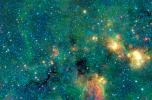
|
-
PIA14723:
-
Dark Murky Clouds in the Bright Milky Way
Full Resolution:
TIFF
(33.17 MB)
JPEG
(1.251 MB)
|

|
2011-08-23 |
|
Wide-field Infrared Survey Explorer (WISE)
|
|
6000x3000x3 |
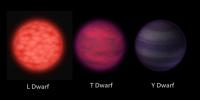
|
-
PIA14722:
-
A Trio of Brown Dwarfs (Artist's Concept)
Full Resolution:
TIFF
(54 MB)
JPEG
(410.4 kB)
|

|
2011-08-23 |
|
Wide-field Infrared Survey Explorer (WISE)
|
WISE Telescope
|
874x874x3 |
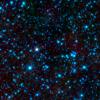
|
-
PIA14721:
-
Reigning Title-Holder for Coldest Brown Dwarf
Full Resolution:
TIFF
(2.294 MB)
JPEG
(96.81 kB)
|

|
2011-08-23 |
|
Wide-field Infrared Survey Explorer (WISE)
|
|
4800x3200x3 |
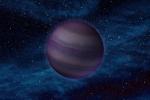
|
-
PIA14720:
-
'Y Dwarf' Chillin' in Space (Artist's Concept)
Full Resolution:
TIFF
(46.08 MB)
JPEG
(794.4 kB)
|

 Planetary Data System
Planetary Data System


















































































































